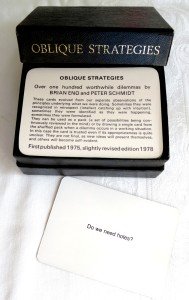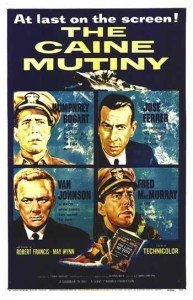Oblique Strategies
 I am a big believer in Edison’s “Genius is one percent inspiration, ninety-nine percent perspiration”. At Micrex, we eschew creativity enhancement programs, inspiration tools and their ilk.
I am a big believer in Edison’s “Genius is one percent inspiration, ninety-nine percent perspiration”. At Micrex, we eschew creativity enhancement programs, inspiration tools and their ilk.
Problem solving, however, is not without rules. We run trials of one kind or another almost every day. Failure is a big part of our world, and learning from these failures is how we capture value from the activity. As we have found many wrong ways to run trials, we have developed techniques for when things are not going well.
This summer I was introduced to a very special deck of cards, Oblique Strategy cards. These were developed by two artists (Brian Eno and Peter Schmidt) in 1975 to facilitate what is called lateral thinking. Education teaches us to problem solve by digging deeper into a subject. Lateral thinking, or a lateral strategy, is one that basically picks one up and suggests a new start. Each card has a thought or concept that is designed to move our thinking – laterally.
The first card I pulled from the deck was, “Do we need holes?” For what I was working on at the time – the concept was break-through. Use the links above to learn more.



